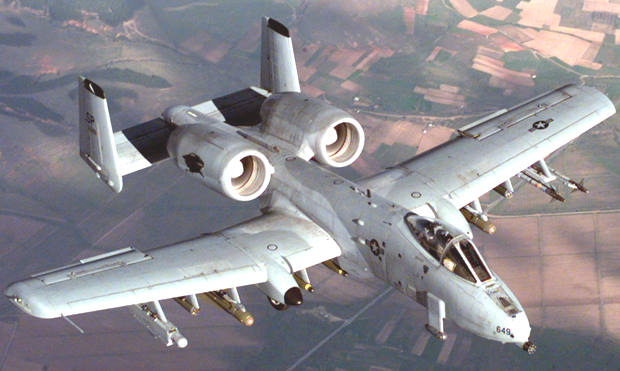Military
Is the US Air Force Looking for Another All-New Airplane?
Published:
Last Updated:

This should be pretty big news to aircraft makers. The current Air Force CAS platform is the A-10 Thunderbolt (aka, the Warthog) from Northrop Grumman Corp. (NYSE: NOC) which entered service in 1976 with the last one being built in 1984. The proposed replacement has been the F-35 Joint Strike Fighter from Lockheed Martin Corp. (NYSE: LMT). And that’s been a bone of contention among some members of Congress and Air Force officials for some time now.
An April report by the Government Accountability Office questioned the service’s estimated $4.2 billion saving if the A-10 is retired, saying the rationale for the estimate is incomplete and may overstate or understate estimated savings:
Without a reliable estimate of savings, neither we nor any other organization has a reliable basis from which it could identify potential alternative savings and assess their relative risk, including to air superiority and global strike. …
Nor has the USAF considered fully the implications of retiring the A-10:
Air Force divestment of the A-10 will create potential gaps in close air support (CAS)—a mission involving air action against hostile targets in proximity to friendly forces—and other missions, and DOD is planning to address some of these gaps. For example, A-10 divestment results in an overall capacity decrease in the Air Force’s CAS-capable fleet. This capacity reduction is mitigated by phasing A-10 divestment over several years and by introducing the F-35 into the fleet, but Air Force documentation also shows that the F-35’s CAS capability will be limited for several years. Air Force analysis shows that divestment of the A-10 would increase operational risks in one DOD planning scenario set in 2020.
In the strategy document released last week, though, the Air Force appears to be saying that it is considering requesting a new CAS plane that would replace the A-10 and, presumably, the F-35.
Is the Air Force just tossing out a red herring that Congress will never approve so that top commanders can say, “We did our best to replace the A-10 with a plane specifically designed to support ground troops, but the politicians won’t pay for it, so we’re stuck with (fill in the blank) .”
The F-35 will cost U.S. taxpayers more than $1 trillion over the next 50 years and Lockheed is scheduled to build 2,443 of the planes in three variations: one for the Air Force, one for the Marines, and one for the Navy. Each plane is estimated to cost more than $650 million over its entire lifespan. The GAO said last year that it costs about $180 million for each plane and that Lockheed expects to get that cost down to around $85 million when production ramps up. Maintenance and crew costs make up the balance.
The Air Force has already acquired several F-35As out of planned purchase of more than 1,000 over the longer term. The F-35A is scheduled to go operational in the fall of 2016.
On July 31st the Marine Corps declared the F-35B operational and plans to buy 340 of the planes. The Marines also expect to purchase 80 of the F-35C which has been designed for carrier landings for the Navy. The F-35C is not scheduled to be operational until 2018.
There appears to be at least some reason to believe that Lockheed won’t build all the F-35s that the Pentagon had once hoped to buy. But it is also a safe bet—at this point some 14 years after the Lockheed won the contract—that the program won’t be scrapped or even re-evaluated.
As for the A-10, the Air Force has maintained that it needs to retire the planes in order to switch its crews and maintenance programs to the F-35. But according to the strategy document, the service is looking at the possibility of a new CAS plane, and that could indicate that some of the thousand or more F-35s the Air Force originally intended to be purchased will be have to be cut back in order to launch a new CAS program.
New airplanes are complex and expensive, and therefore a natural fit for Congressional indecision. The next few months ought to be instructive.
ALSO READ: Top 10 US Defense Contractors
Start by taking a quick retirement quiz from SmartAsset that will match you with up to 3 financial advisors that serve your area and beyond in 5 minutes, or less.
Each advisor has been vetted by SmartAsset and is held to a fiduciary standard to act in your best interests.
Here’s how it works:
1. Answer SmartAsset advisor match quiz
2. Review your pre-screened matches at your leisure. Check out the advisors’ profiles.
3. Speak with advisors at no cost to you. Have an introductory call on the phone or introduction in person and choose whom to work with in the future
Thank you for reading! Have some feedback for us?
Contact the 24/7 Wall St. editorial team.